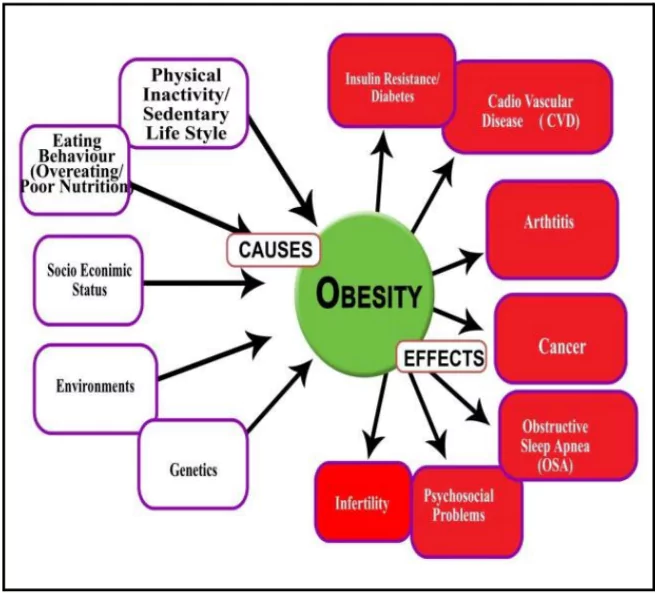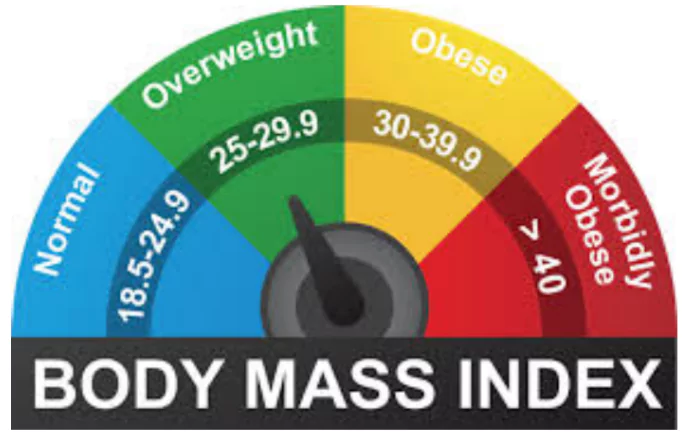The Lancet urges a shift from Body Mass Index (BMI) to better obesity metrics, emphasizing the need for accurate assessments to address rising obesity rates.
Key reforms proposed in obesity diagnosis
- Old classification system
- Traditional Approach (Old System) Relied solely on Body Mass Index (BMI).
- BMI over 30 was considered obese
- This method was Simple but problematic measurement system
- New Classification System
- Dual System: New system comprises two categories: Clinical Obesity and Pre-clinical Obesity.
- Clinical Obesity: Considers not just physical measurements but also health impacts like heart disease, diabetes, and joint issues.
- It looks at how excess weight affects daily activities.
- Pre-clinical Obesity: Identifies individuals at risk before they develop serious health issues.
- This allows for early intervention and promotes healthier lifestyles.
Enroll now for UPSC Online Classes
Diagnostic Tools and Implementation
- Beyond BMI: The new framework uses more advanced tools:
- Waist Circumference: Important for spotting dangerous abdominal fat.
- Critical threshold for women: > 35 inches
- Critical threshold for men: > 40 inches
- Indicates abdominal fat risk
- DEXA Scans: Provide accurate body fat measurements.
- Comprehensive Health Assessments: Check cardiovascular health, metabolic markers, and joint functionality.
- Lifestyle Factors: Includes physical activity, diet, and sleep quality.
What is obesity?

- It is a disease in which the body accumulates excess body fat (adipose tissue).
- It occurs due to intake of more calories than burned by exercises.
- A person having a BMI of 30 or more is considered obese.
Indian Status of obesity: 2022 v/s 1990
- Obesity among women: The Lancet study reveals that 44 million women above 20 in India were obese.
- Among women, the prevalence of obesity has seen a sharp rise, with 9.8 per cent now classified as obese.
- It has increased by 8.6 percentage points since 1990.
 Obesity among men: 26 million men aged above 20 in India were found to be obese
Obesity among men: 26 million men aged above 20 in India were found to be obese -
- The obesity rate among men has increased to 5.4 per cent, representing a 4.9 percentage point rise over the same period.
- India’s Global Position:
- Regarding obesity prevalence among women, India ranks 182nd out of 197 countries worldwide as of 2022.
- For men, India holds the 180th position globally.
- Among girls and boys, India is placed 174th on the global scale.
- Global ranking for underweight: India holds the highest global ranking for underweight girls and the second-highest for boys.
Check Out UPSC NCERT Textbooks From PW Store
What is BMI?
- BMI is a medical tool that measures body fat by comparing a person’s weight and height.
- It is calculated using the formula:
BMI = Weight (kg) ÷ Height² (m²)
- While BMI gives an estimate of body fat, it is not always accurate.
- Healthcare providers combine BMI with other tests to assess overall health.
- Importance of Body Fat
- Too Much Body Fat: Can cause health problems like heart disease, stroke, and Type 2 diabetes.
 Too Little Body Fat: May lead to malnutrition, weak immunity, anemia, osteoporosis, and infertility.
Too Little Body Fat: May lead to malnutrition, weak immunity, anemia, osteoporosis, and infertility.- Ideal Body Fat: Helps absorb vitamins, provides energy, regulates body temperature, and protects organs.
- BMI Classification (in kg/m²)
- Underweight: Less than 18.5
- Normal Range: 18.5 to 24.9
- Overweight: 25 to 29.9
- Class I Obesity: 30 to 34.9
- Class II Obesity: 35 to 39.9
- Class III Obesity: More than 40
- Limitations of BMI
- Cannot distinguish between:
- Muscle mass and fat mass
- Different body types and compositions
- Athletic vs sedentary individuals
- Does not account for fat distribution
- Fails to consider individual health conditions
- Examples of BMI limitations:
- Athletes often classified as obese despite being healthy
- Some people with dangerous fat levels may have normal BMI
- Doesn’t account for age or gender difference
![]() 16 Jan 2025
16 Jan 2025


 Obesity among men: 26 million men aged above 20 in India were found to be obese
Obesity among men: 26 million men aged above 20 in India were found to be obese  Too Little Body Fat: May lead to malnutrition, weak immunity, anemia, osteoporosis, and infertility.
Too Little Body Fat: May lead to malnutrition, weak immunity, anemia, osteoporosis, and infertility.